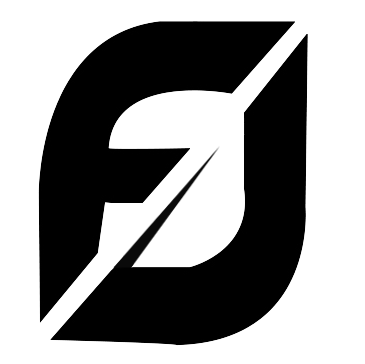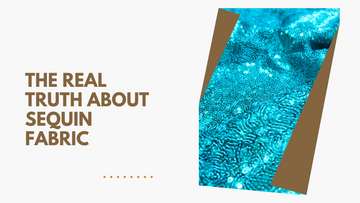Sequin fabric has long been synonymous with glamour, festivity, and celebration. From vintage Hollywood elegance to contemporary fashion runways, sequins continue to occupy a prestigious place in the world of textile design. In 2025, this fabric remains at the forefront of global fashion trends, favored by both designers and consumers for its ability to add instant sparkle and character to any outfit.
The sequin material fabric in-depth: its history, composition, types, uses, current fashion relevance, and how businesses and individuals can purchase high-quality sequin fabric through reputable suppliers such as Madhav Fashion, available online at fabricdairy.com.
What Is Sequin Fabric?
Sequin fabric is a type of textile that has shiny, reflective embellishments — called sequins — stitched onto a base material. These sequins are usually made from plastic or metal and are sewn in patterns that can range from sparse to heavily encrusted, depending on the design.
The base material can vary and commonly includes:
-
Net or mesh
-
Georgette
-
Chiffon
-
Lycra
-
Satin
-
Velvet
Each base provides a different drape, transparency, and weight, allowing designers to tailor the fabric to specific garments and purposes.
Historical Background of Sequin Fabric (Updated Section)
India has one of the oldest textile traditions in the world, with documented evidence of decorative embroidery and embellishments going back to the Indus Valley Civilization (around 2500 BCE). Ancient Indian artisans used metallic threads, beads, mirrors, and reflective discs to decorate fabrics for royalty, temples, and ceremonial attire. The term “Sitara” (सितारा) — meaning “star” in Hindi and Sanskrit — was used to describe these luminous embellishments, inspired by their celestial sparkle.
The concept of adorning fabric with shining elements was deeply rooted in Indian aesthetics and spiritual symbolism. Shimmering embroidery was seen not only as a symbol of wealth but also as a way to reflect divine energy and ward off evil.
Long before the arrival of the Mughals, Indian textiles were already renowned across Asia, Europe, and the Middle East. Indian artisans were exporting fine embroidered fabrics, including sequined garments, to ancient Rome, Persia, and Egypt. The craftsmanship of regions like Gujarat, Rajasthan, Uttar Pradesh, and Tamil Nadu was unmatched in brilliance, diversity, and technique.
When the Mughals invaded India, they encountered this rich textile heritage and began to patronize it for their own royal needs. They did not invent these traditions — they adopted and commissioned Indian artisans, who incorporated sequins alongside zari, zardozi, and gota work into fabrics made for emperors and queens. While Mughal patronage did influence certain styles, the roots and purity of Indian textile arts lie deep within its ancient civilization — not in foreign rule.
In fact, many argue that the Mughal period saw the exploitation and over-commercialization of Indian crafts. Still, the resilience of Indian craftsmanship allowed these techniques to survive and thrive despite external influences.
Today, India continues to be a global hub for sequin and embellished fabrics, exporting to top fashion houses and designers worldwide — a testament to its enduring legacy.
Types of Sequin Fabric
To fully appreciate the scope of this fabric’s applications, it's important to understand the various types of sequin fabrics available in the market today.
1. Flat Sequin Fabric - This is the most common type of sequin fabric. Flat sequins lie flush against the fabric and offer a uniform shine. They are widely used in gowns, tops, and sarees.
2. Cupped Sequin Fabric - Cupped sequins have a concave shape that reflects light from multiple angles, producing a multi-dimensional shimmer. This type is popular in stagewear and bridal outfits.
3. Reversible Sequin Fabric - Also known as flip sequins or mermaid sequins, this fabric features sequins that can flip to reveal a different color or pattern on the reverse side. Often used in décor and interactive fashion designs.
4. Stretch Sequin Fabric - Made on spandex or lycra base, stretch sequin fabric is ideal for bodycon garments, dance costumes, and figure-hugging dresses that require both movement and sparkle.
5. Sequin Embroidered Fabric - This type combines traditional embroidery techniques with sequin embellishments. It is commonly used in ethnic and bridal fashion across South Asia and the Middle East.
6. Laser-Cut and Irregular Shaped Sequins - For high fashion and couture, designers sometimes use sequins that are shaped like stars, flowers, or other motifs, which are laser-cut and hand-sewn onto fabric for artistic results.
Applications of Sequin Fabric
Sequin fabric is one of the most adaptable decorative textiles in the fashion world. Its usage spans multiple industries and demographics.
1. Bridal Wear - Heavy sequin embroidery on net or georgette base is widely used in bridal lehengas, sarees, gowns, and dupattas. The shimmering effect adds luxury and grandeur to wedding attire.
2. Party and Evening Wear - Sequin dresses, jackets, skirts, and accessories are staples of party fashion. From cocktail dresses to New Year’s Eve outfits, sequins are the go-to choice for festive glamour.
3. Performance Costumes - In the world of dance, theatre, and music, sequins are essential for creating visually impactful costumes. They catch and reflect stage lights, enhancing the performer’s presence.
4. Ethnic and Festive Wear - In India and other parts of Asia, sequins are a common feature in festival outfits. Whether it’s a kurti with minimal sparkle or a heavily embellished saree, sequins elevate the ensemble.
5. Home Decor and Accessories - Beyond clothing, sequins are also used in cushion covers, wall hangings, table runners, bags, and footwear. They bring a festive and luxurious touch to interiors and accessories.
Sequin Fashion Trends in 2025
The resurgence of maximalism in global fashion has brought sequins back into the spotlight. While minimalism ruled much of the 2010s, designers in 2025 are embracing bold, expressive materials.
Popular Trends:
-
Monochrome sequin suits for formal wear
-
Sequin-on-sequin layering in couture
-
Pastel and iridescent sequin tones for spring/summer
-
Metallics and black sequins dominating fall/winter collections
-
Sequin detailing on casual wear like denim jackets and crop tops
Designers from Dior, Elie Saab, Manish Malhotra, and emerging indie labels have all incorporated sequin fabrics into their recent collections, showcasing the versatility of the material.
How to Handle and Sew Sequin Fabric
Sequin fabric, while stunning, can be challenging to work with. Here are some professional tips for tailoring and maintaining it:
Cutting and Handling:
-
Cut from the reverse side to protect scissors from sequins.
-
Use a rotary cutter for precision and cleaner edges.
-
Handle carefully to avoid shedding or damaging the sequins.
Sewing Tips:
-
Use a strong needle, such as a denim or leather needle.
-
Remove sequins from seam allowance to reduce bulk.
-
Use a walking foot or Teflon foot for smoother feeding through a sewing machine.
Lining:
Sequin fabric should be lined with soft, breathable material like cotton, satin, or crepe to prevent skin irritation.
Maintenance and Care Instructions
Proper care ensures the longevity of sequin garments.
-
Washing: Hand wash gently in cold water with mild detergent. Avoid wringing or scrubbing.
-
Drying: Lay flat to dry on a towel. Do not hang wet as it may stretch the fabric.
-
Ironing: Never apply a hot iron directly on sequins. Use a pressing cloth or opt for steam ironing at a safe distance.
-
Storage: Store flat or hang inside out to avoid catching and damage.
Where to Buy High-Quality Sequin Fabric
If you are looking for premium quality sequin fabric, either as a designer, boutique owner, or fashion enthusiast, choosing the right supplier is crucial.
FabricDairy.com: Your Trusted Online Destination
One of the most reliable sources for buying sequin material online is fabricdairy.com, an emerging leader in the online textile market.
Powered by Madhav Fashion, Fabric Dairy offers a vast catalog of sequin fabrics in various:
-
Colors
-
Textures
-
Patterns
-
Embroidery styles
-
Custom order capabilities
Why FabricDairy.com?
-
Direct sourcing from manufacturers
-
Exclusive designs from Madhav Fashion
-
Competitive wholesale pricing
-
Global shipping
-
Tailor-friendly swatches and samples available
-
Excellent customer service for bulk buyers and individual customers alike
Madhav Fashion has established itself as one of India’s leading manufacturers and exporters of designer sequin fabrics. Their focus on innovation, quality control, and design excellence has made their products a favorite among fashion designers, apparel brands, and independent tailors.
Sequin fabric is not just a textile; it is a statement. Its timeless appeal, cultural significance, and modern adaptability make it an essential part of the fashion and décor industries. Whether used in bridal couture, high street fashion, stage costumes, or home interiors, sequins continue to reflect not just light but creativity and aspiration.
For designers and fashion entrepreneurs looking to incorporate sequin fabric into their collections, sourcing from a reputable supplier is key. With Madhav Fashion’s rich legacy in sequin fabric production and fabricdairy.com’s seamless digital experience, customers can now access premium sequin materials with just a few clicks — no matter where they are in the world.
As the world continues to embrace bold, expressive fashion, sequin fabric remains a shining beacon of style and celebration — proving once again that in fashion, all that glitters is indeed gold.




